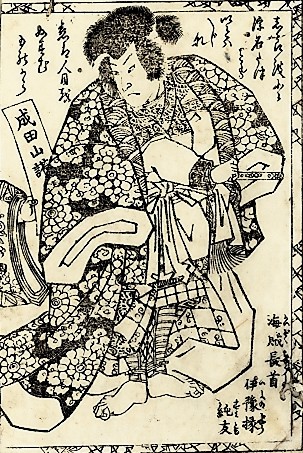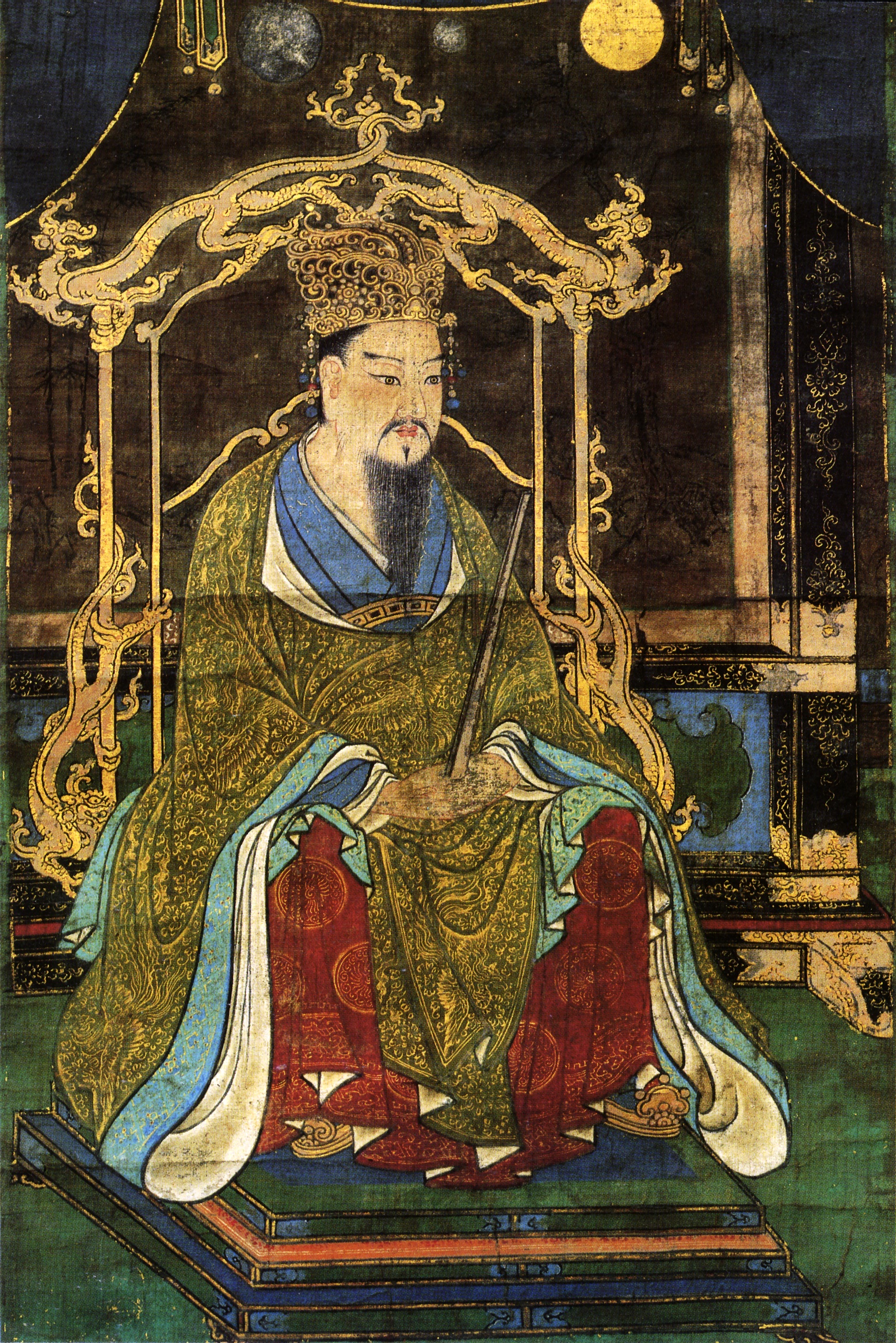|
Heian Period
The is the last division of classical Japanese history, running from 794 to 1185. It followed the Nara period, beginning when the 50th emperor, Emperor Kanmu, moved the capital of Japan to Heian-kyō (modern Kyoto). means "peace" in Japanese. It is a period in Japanese history when the Chinese influences were in decline and the national culture matured. The Heian period is also considered the peak of the Japanese imperial court and noted for its art, especially poetry and literature. Two types of Japanese script emerged, including katakana, a phonetic script which was abbreviated into hiragana, a cursive alphabet with a unique writing method distinctive to Japan. This gave rise to Japan's famous vernacular literature, with many of its texts written by court women who were not as educated in Chinese compared to their male counterparts. Although the Imperial House of Japan had power on the surface, the real power was in the hands of the Fujiwara clan, a powerful aristocratic f ... [...More Info...] [...Related Items...] OR: [Wikipedia] [Google] [Baidu] |
Shōen
A was a field or manor in Japan. The Japanese term comes from the Tang dynasty Chinese term "莊園" (Mandarin: ''zhuāngyuán'', Cantonese: ''zong1 jyun4''). Shōen, from about the 8th to the late 15th century, describes any of the private, tax free, often autonomous estates or manors whose rise undermined the political and economic power of the emperor and contributed to the growth of powerful local clans. The estates developed from land tracts assigned to officially sanctioned Shintō shrines or Buddhist temples or granted by the emperor as gifts to the Imperial family, friends, or officials. As these estates grew, they became independent of the civil administrative system and contributed to the rise of a local military class. With the establishment of the Kamakura shogunate, or military dictatorship, in 1192, centrally appointed stewards weakened the power of these local landlords. The shōen system passed out of existence around the middle of the 15th century, when village ... [...More Info...] [...Related Items...] OR: [Wikipedia] [Google] [Baidu] |
Minamoto No Yoritomo
was the founder and the first shogun of the Kamakura shogunate of Japan, ruling from 1192 until 1199.Nussbaum, Louis-Frédéric. (2005). "Minamoto no Yoriie" in . He was the husband of Hōjō Masako who acted as regent (''shikken'') after his death. Yoritomo was the son of Minamoto no Yoshitomo and belonged to Seiwa Genji's prestigious Kawachi Genji family. After setting himself the rightful heir of the Minamoto clan, he led his clan against the Taira clan from his capital in Kamakura, beginning the Genpei War in 1180. After five years of war, he finally defeated the Taira clan in the Battle of Dan-no-ura in 1185. Yoritomo thus established the supremacy of the warrior samurai caste and the first shogunate (''bakufu'') at Kamakura, beginning the feudal age in Japan, which lasted until the mid-19th century. Early life Yoritomo was the third son of Minamoto no Yoshitomo, heir of the Minamoto (Seiwa Genji) clan, and his official wife, Yura-Gozen, daughter of Fujiwara no Sue ... [...More Info...] [...Related Items...] OR: [Wikipedia] [Google] [Baidu] |
Kamakura Period
The is a period of Japanese history that marks the governance by the Kamakura shogunate, officially established in 1192 in Kamakura by the first ''shōgun'' Minamoto no Yoritomo after the conclusion of the Genpei War, which saw the struggle between the Taira and Minamoto clans. The period is known for the emergence of the samurai, the warrior caste, and for the establishment of feudalism in Japan. During the early Kamakura period, the shogunate continued warfare against the Northern Fujiwara which was only defeated in 1189. Then, the authority to the Kamakura rulers waned in the 1190s and power was transferred to the powerful Hōjō clan in the early 13th century with the head of the clan as regent (Shikken) under the shogun which became a powerless figurehead. The later Kamakura period saw the invasions of the Mongols in 1274 and again in 1281. To reduce the amount of chaos, the Hōjō rulers decided to decentralize power by allowing two imperial lines – Northern and Southern ... [...More Info...] [...Related Items...] OR: [Wikipedia] [Google] [Baidu] |
Kamakura Shogunate
The was the feudal military government of Japan during the Kamakura period from 1185 to 1333. Nussbaum, Louis-Frédéric. (2005)"''Kamakura-jidai''"in ''Japan Encyclopedia'', p. 459. The Kamakura shogunate was established by Minamoto no Yoritomo after victory in the Genpei War and appointing himself as ''shōgun''. Yoritomo governed Japan as military dictator from the eastern city of Kamakura with the emperor of Japan and his Imperial Court in the official capital city of Heian-kyō (Kyoto) as figureheads. The Kamakura ''shōguns'' were members of the Minamoto clan until 1226, the Fujiwara clan until 1252, and the last six were minor princes of the imperial family.Nussbaum"Minamoto"at pp. 632–633. The Hōjō clan were the ''de facto'' rulers of Japan as ''shikken'' (regent) of the ''shōgun'' from 1203.Nussbaum"Fujiwara"at pp. 200–201. The Kamakura shogunate saw the Jōkyū War in 1221 and the Mongol invasions of Japan under Kublai Khan in 1274 and 1281. The Kamaku ... [...More Info...] [...Related Items...] OR: [Wikipedia] [Google] [Baidu] |
Genpei War
The was a national civil war between the Taira and Minamoto clans during the late Heian period of Japan. It resulted in the downfall of the Taira and the establishment of the Kamakura shogunate under Minamoto no Yoritomo, who appointed himself as ''Shōgun'' in 1192, governing Japan as a military dictator from the eastern city of Kamakura. It followed a ''coup d'état'' by the Taira in 1179 with the removal of rivals from all government posts, and subsequently banishing them, and a call to arms against the Taira, led by the Minamoto in 1180. The ensuing Battle of Uji took place just outside Kyoto, starting a five-year-long war, concluding with a decisive Minamoto victory in the naval Battle of Dan-no-ura. However, it has been pointed out that the Battle of Ōshū in 1189 was the last battle during this period of civil war, as it completed Yoritomo's nationwide domination through the annexation of Northeast Japan. The name "Genpei" (sometimes romanized as ''Gempei'') come ... [...More Info...] [...Related Items...] OR: [Wikipedia] [Google] [Baidu] |
Taira Clan
The Taira was one of the four most important clans that dominated Japanese politics during the Heian, Kamakura and Muromachi Periods of Japanese history – the others being the Fujiwara, the Tachibana, and the Minamoto. The clan is divided into four major groups, named after the emperor they descended from: Kanmu Heishi, Ninmyō Heishi, Montoku Heishi, and Kōkō Heishi. The clan is commonly referred to as or , using the character's On'yomi for ''Taira'', while means " clan", and is used as a suffix for "extended family". History Along with the Minamoto, Taira was one of the honorary surnames given by the emperors of the Heian Period (794–1185 CE) to their children and grandchildren who were not considered eligible for the throne. The clan was founded when the Imperial Court grew too large, and the emperor ordered that the descendants of previous emperors from several generations ago would no longer be princes, but would instead be given noble surnames and ra ... [...More Info...] [...Related Items...] OR: [Wikipedia] [Google] [Baidu] |
Taira No Kiyomori
was a military leader and ''kugyō'' of the late Heian period of Japan. He established the first samurai-dominated administrative government in the history of Japan. Early life Kiyomori was born in Heian-kyō, Japan, in 1118 as the first son of Taira no Tadamori, who was the head of the Taira clan. It has been speculated that Kiyomori was actually an illegitimate son of Emperor Shirakawa. His mother, Gion no Nyogo, was a palace servant according to ''The Tale of the Heike''. Family * Father: Taira no Tadamori * Mother: Gion no Nyogo (d. 1147) *Concubines and regents: **Wife: N/A *** Taira no Shigemori *** Taira no Munemori *** Taira no Tomomori *** Taira no Tokuko *** Taira no Shigehira Career After the death of his father in 1159, Kiyomori assumed control of the Taira clan and ambitiously entered the political realm in which he had previously only held a minor post. Before that though, in 1156, he and Minamoto no Yoshitomo, head of the Minamoto clan, suppressed the rebe ... [...More Info...] [...Related Items...] OR: [Wikipedia] [Google] [Baidu] |
Hōgen Rebellion
{{disambiguation ...
In Japanese, Hōgen may refer to several words. Among them: * Hōgen (era) (保元, 1156–1159), an era in Japan * Hōgen rebellion, a short civil war in 1156 * dialect (方言) — for example: "eigo no hōgen" (English dialect) See also * Hogen - the Cornish word for pasty * Japanese dialects The dialects of the Japanese language fall into two primary clades, Eastern (including Tokyo) and Western (including Kyoto), with the dialects of Kyushu and Hachijō Island often distinguished as additional branches, the latter perhaps the most di ... [...More Info...] [...Related Items...] OR: [Wikipedia] [Google] [Baidu] |
Fujiwara No Sumitomo
was a Japanese Heian era court noble and warrior. From 939 to 941 he aided the Taira clan in a series of revolts. Sumitomo built his power base in Northern Kyushu. After making a secret agreement with Taira no Masakado, who was leading a revolt in Shimōsa Province, Sumitomo led his own revolt in Iyo province in 939, and soon afterwards invaded the provinces of Harima Province, Harima and Bizen Province, Bizen. The revolt quickly spread throughout the whole San'yō region. Pursued by imperial forces led by Ono no Yoshifuru and Minamoto no Tsunemoto, Sumitomo fled to Dazaifu, Fukuoka, Dazaifu, burning down the Dazaifu headquarters before he was defeated in battle at Hakata Bay. He then fled back to Iyo province, where he was captured. He was executed shortly afterwards, in 941, by Tachibana no Tōyasu. His father was Fujiwara no Yoshinori, and he was the ancestor of the Arima clan of Hizen province. References * * * {{DEFAULTSORT:Fujiwara no, Sumitomo Fujiwara clan 941 de ... [...More Info...] [...Related Items...] OR: [Wikipedia] [Google] [Baidu] |
Hitachi Province
was an old provinces of Japan, old province of Japan in the area of Ibaraki Prefecture.Louis Frédéric, Nussbaum, Louis-Frédéric. (2005). "''Hitachi fudoki''" in . It was sometimes called . Hitachi Province bordered on Shimōsa Province, Shimōsa (Lower Fusa Province, Fusa), Shimotsuke Province, Shimotsuke, and Mutsu Province, Mutsu (Iwase Province, Iwase -1718-, Iwashiro Province, Iwashiro -1869-, Iwaki Province (718), Iwaki -1718- and Iwaki Province (1868), -1869-) Provinces. Generally, its northern border was with Mutsu. History The ancient provincial capital (Hitachi Kokufu) and temple (Hitachi Kokubun-ji) were located near modern Ishioka, Ibaraki, Ishioka and have been excavated, while the chief shrine was further east at Kashima, Ibaraki, Kashima (Kashima Shrine). The province was established in the 7th century. In the Sengoku period the area was divided among several ''daimyōs'', but the chief castle was usually in the Mito Castle of the modern city of Mito, Ibar ... [...More Info...] [...Related Items...] OR: [Wikipedia] [Google] [Baidu] |
Taira No Masakado
was a Heian period provincial magnate (''gōzoku'') and samurai based in eastern Japan, notable for leading the first recorded uprising against the central government in Kyōto. Early life Masakado was one of the sons of Taira no Yoshimasa (平良将), also known as Taira no Yoshimochi (平良持), of the Kanmu Taira clan (''Kanmu Heishi''), descendants of Emperor Kanmu (reigned 781-806) who were demoted from princely to commoner status and granted the Taira surname. Yoshimochi was one of the sons of Prince Takamochi, a grandson or great-grandson of Kanmu who was appointed the vice-governor of Kazusa Province (modern central Chiba Prefecture) in 889 ( Kanpyō 1). Takamochi's sons who joined him there occupied a variety of provincial offices in the eastern part of the country such as that of '' chinjufu shōgun'', the commander-in-chief of the defense garrison (''chinjufu'') in Mutsu Province tasked with subjugating the Emishi peoples of the north. Not much is known of Mas ... [...More Info...] [...Related Items...] OR: [Wikipedia] [Google] [Baidu] |






